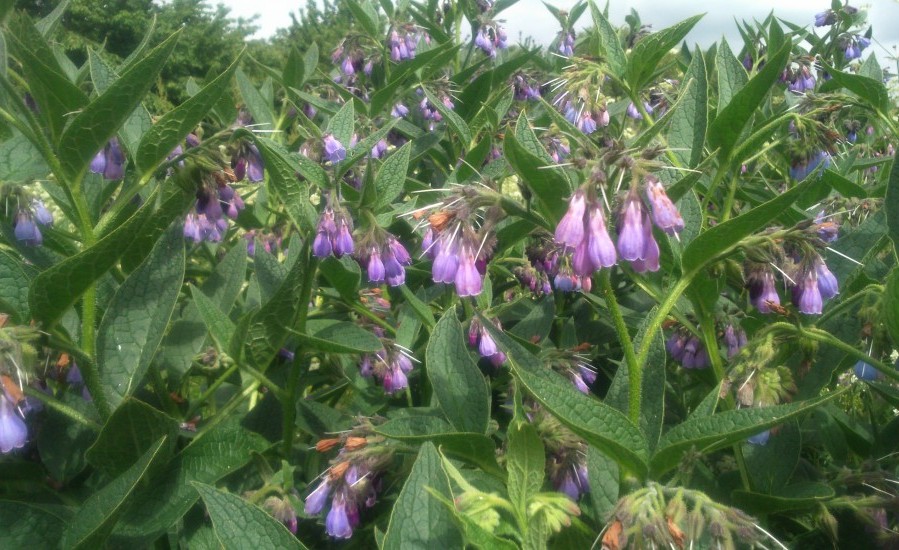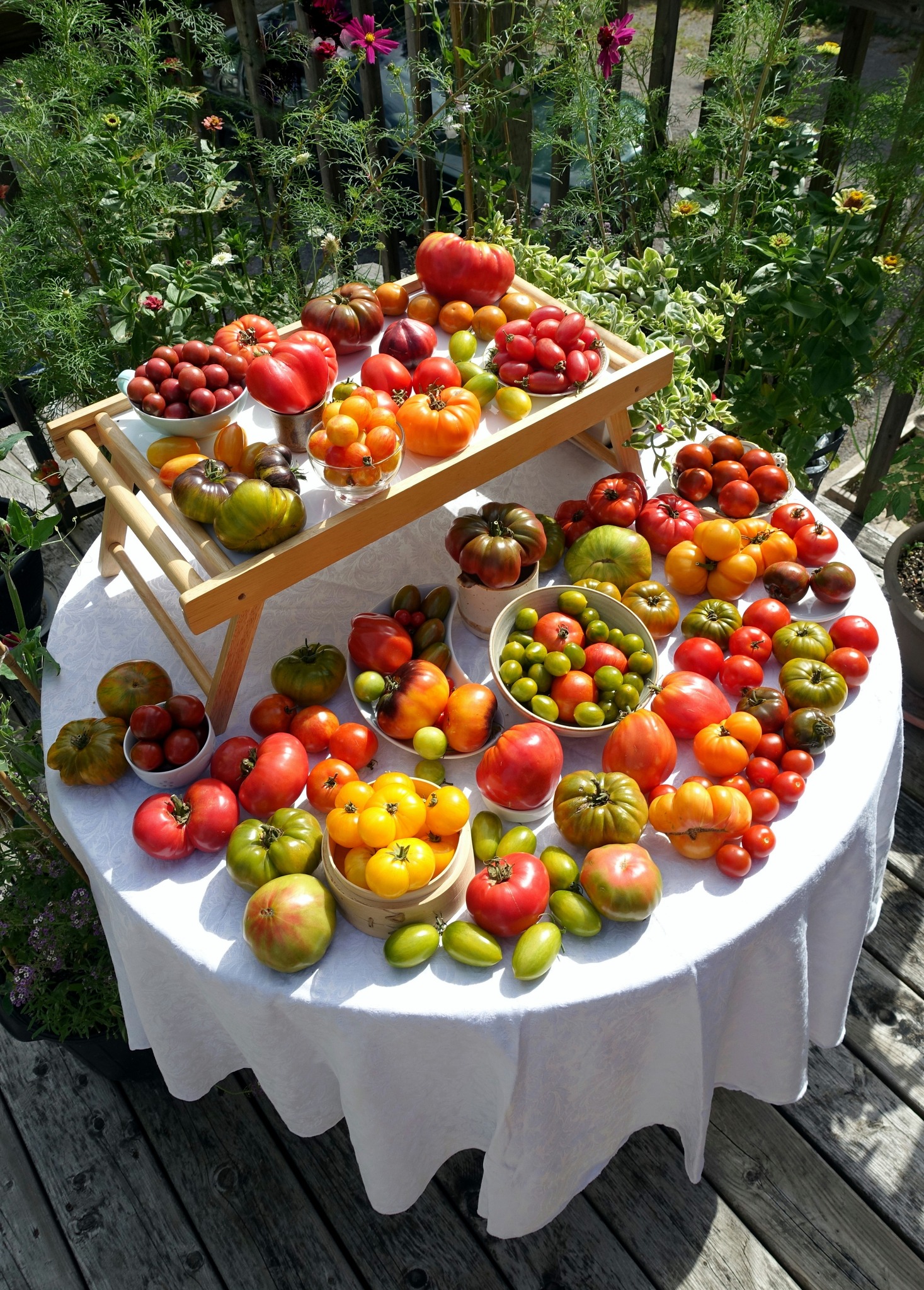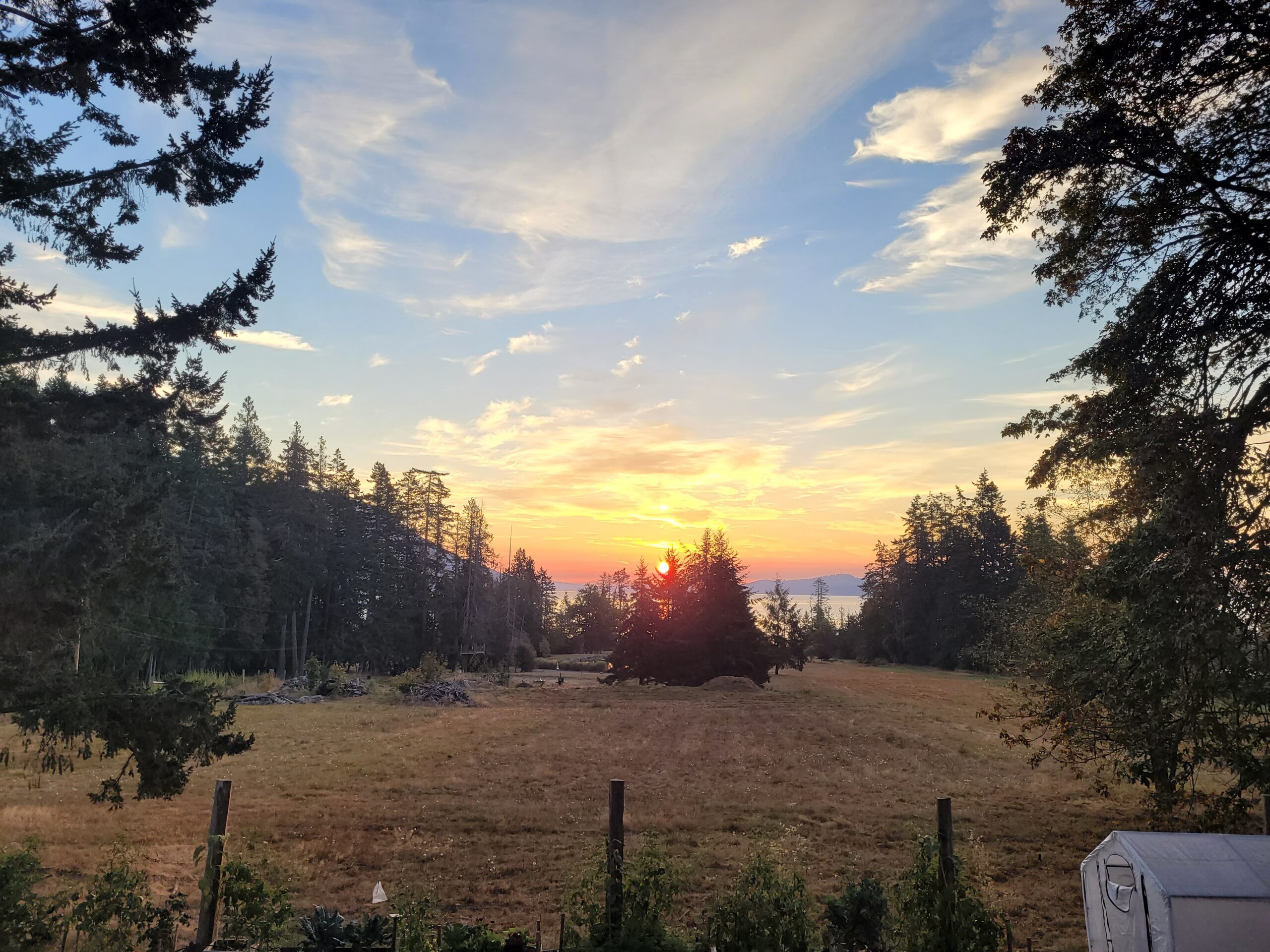Article and photographs by Jacqui Shannon.
Here in the United Kingdom as in Canada, along the rivers and in marsh lands, something nearly magical grows, Symphytum officinale. In may areas in the UK it is so prolific there are actual “harvesting days” where the nature reserves encourage gardeners to come and cut what they need.
First introduced to to North America in 1954, you may know it as Quaker’s Comfrey, Knitbone or even as a weed. Regardless of what you call it, it’s indispensable. Any gardener who wants to fertilize their garden, especially fruiting plants or seeding crops, naturally and healthily should know about and utilize this amazing plant.
It’s a powerful ally of the organic gardener.
What makes this plant exceptional are the levels of nitrogen and potassium it releases upon decomposition.
Comfrey is what you call a “dynamic accumulator.” It has a large turnip shaped tap root that mines up nutrients and minerals from deep within the soil which it brings up into it’s leaves. Because it does this much deeper than most plant roots reach, the surrounding vegetation isn’t compromised and previously unreachable nutrients are made accessible . Harvesting and composting its leaves releases the nitrogen and potassium making them accessible to other plants and the rest of your garden. Quick growing, Comfrey can be harvested boosting the minerals available to your garden organically several times per year eliminating the need to purchase chemical based tomato or plant foods.
Harvesting is easy. Just before the plant flowers is when you’ll get the most benefit, but around that time is also quite good. Sheer stems about 15cm above ground. Keep the leaves, flowers if you wish and discard the stem. Harvests can occur safely when the plant reaches approximately 60cm, in spring until early autumn without risk to to the plant. In autumn it’s important to leave pant to grow and rejuvenate it’s stores for overwintering.
Once you have them it’s up to you how you use them. You can choose to make a tea, like the one in our nettle article which takes 4 to 5 weeks, add them as a two inch mulch around fruiting plants and they will break down naturally or wilt them for two to three days and simply dig it in! Unlike other high nitrogen content sources Comfrey doesn’t rob nitrogen from the soil because it’s C:N ratio is lower than well rotted compost.
If you can’t find wild Comfrey, the cultivated sterile variety Bocking 14 is often available through seed suppliers. If you purchase your own, let it grow one full year before beginning to harvest to allow it a firmly establish. Never dig up and plant a non sterile, wild plant, it will take over your garden quickly. Bocking 14 will grow quite large and is best separated and shared with other gardeners after a few years growth.



